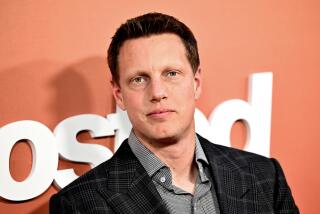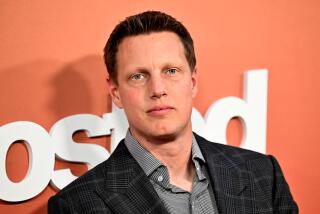Oracle’s Merger Hurdles Get Higher
The day he launched his hostile bid for rival PeopleSoft Inc., Larry Ellison casually discounted the technological hazards of the deal.
“There’s almost no business integration risk at all,” the Oracle Corp. chairman and chief executive said in a June 6 television interview. The reason: There wouldn’t be much to integrate.
“Our intention is we’re not going to actively sell the PeopleSoft products anymore,” Ellison explained.
But as Ellison has since learned, it’s not that simple. Within days, a backlash from large numbers of PeopleSoft customers forced him to change course and promise to maintain and improve PeopleSoft software for at least another decade.
That reversal put him in a position he had hoped to avoid: confronting what analysts say will be the most daunting challenge if Oracle’s $6.3-billion tender offer for PeopleSoft succeeds.
Combining competing product lines in any merger can be tricky. When the companies are bitter rivals whose complicated business software is fundamentally different, the difficulty promises to intensify to the point of making other recent technology mergers seem easy by comparison.
“This, then, becomes the worst kind of merger, one with a substantial amount of overlap,” said Rob Enderle, an analyst with Forrester Research. “Those kinds of mergers almost always fail. You end up with two internal groups that compete. Customers will get confused. And when that happens, they almost always end up going elsewhere.”
By contrast, computers made by Hewlett-Packard Co. and Compaq Computer Corp. were more or less interchangeable when the two companies combined last year. And in Palm Inc.’s proposed acquisition of Handspring Inc., the companies’ lines of hand-held organizers aim for different users.
But Oracle and PeopleSoft compete head-on in a market where software packages can cost tens of millions of dollars and take years to install and tweak. Their rival products help organizations manage everything from accounts receivable to payroll and benefits.
Few corporate information technology buyers relish the uncertainty that would come with having to phase out PeopleSoft’s products.
“It’s appalling,” said Ola Faucher, director of human resources for the University of Kansas and president of the Higher Education User Group, an independent organization of PeopleSoft education customers. The group includes 650 campuses worldwide with 1.8 million faculty and staff members and more than 8.9 million students.
“When you start using a product, you establish a relationship with a vendor,” Faucher said. “We have all been with PeopleSoft since the embryonic stages to develop the actual code used in the products. PeopleSoft has a group that focuses just on the educational market. We have worked with them and trust them. Oracle can’t replace that.”
For Wynne Powell, chair of British Columbia’s Provincial Public Health Services Authority, the idea of converting to Oracle’s offerings is similarly unthinkable.
The government agency, which provides medical care for all residents, needed a system that could organize and run the myriad financial systems that pay its 10,000 employees. After spending months reviewing various technology companies’ products, the agency signed up with PeopleSoft.
Switching from PeopleSoft would “cost us more than money,” Powell said. “It’ll cost us staff time and the difficulty in overhauling this system from scratch. What can we tell the British Columbia public? That their public health system is going to be thrown into total chaos because an American CEO wants to crush his competition?”
To be sure, Oracle and PeopleSoft products are known for different strengths. PeopleSoft’s human resources software, for example, is considered the “gold standard,” said Albert Pang, an analyst with technology research group IDC. It also is perceived to have superior products used by companies to manage customer relationships. Oracle, on the other hand, is especially strong in financial management software used, for example, to keep track of accounts receivables and payables. Its software for managing vendors and suppliers is also popular.
Still, in the end, there is so much overlap that any marriage is bound to be uneasy. “Any way you look at it, the integration challenges will be staggering,” Pang said. “You can’t integrate them overnight.”
Eventually, Oracle is likely to introduce a suite of software under its eBusiness brand that would be available as a major upgrade to both Oracle and PeopleSoft users. But analysts say that isn’t likely for three or more years. In the meantime, competitors such as SAP are trying to capitalize on the confusion and lure PeopleSoft and Oracle customers away.
To further complicate matters for Oracle, PeopleSoft is barreling ahead with its friendly merger with J.D. Edwards & Co., a Denver-based company that caters to mid-sized firms, a segment in which Oracle also competes.
Ellison has insisted that his initial remarks were misinterpreted to mean that Oracle would not support PeopleSoft products already in use. He promised last week to maintain and improve PeopleSoft software for existing customers for at least 10 years.
“Our position is unchanged: We will not actively market PeopleSoft products for new customers,” Ellison said last week, explaining that he meant that advertising and promotion would be discontinued, not the products themselves. He said Oracle would keep selling PeopleSoft programs and “continue enhancing the products for many, many years to come.”
Despite Ellison’s latest vow, many remain nonplused. “Oracle’s initial stance was that they’d shut down PeopleSoft,” said Ron Hanscome, a software analyst with the Meta Group. “Since there’s been a lot of outcry, they’ve softened their stance. Now they’re talking about supporting PeopleSoft products for the next 10 years. It’s hard to know what to believe right now.”
“There is nothing Larry Ellison can say right now to make me trust him,” said Powell, the Canadian health official. “I think he was telling the truth early on about what he’s going to do.”
PeopleSoft has pounced on Ellison’s statements, running a full-page ad in the Wall Street Journal that mocked his perceived waffling with the quip, “Larry, everyone heard you the first time.”
In response, Oracle Chief Financial Officer Jeff Henley last week sent an e-mail to workers asking them to help reassure PeopleSoft customers that they won’t be left in the lurch.
“PeopleSoft is using scare tactics with its customers,” he wrote. “We need to ensure that we contact these customers so they understand the real facts.”
The stakes are high in part because 80% of PeopleSoft customers also buy Oracle database software. “A lot of PeopleSoft customers are also Oracle customers,” Enderle said. Ellison “can’t afford to alienate these people. Earlier, his message was that he was going to kill PeopleSoft products. To make his current message stick, customers have to believe him. Right now, they don’t.”
SAP has already had some luck luring Oracle and PeopleSoft customers. The German company has run ads in major publications beckoning clients and touting itself as a stable alternative. It recently boasted of having snagged a couple of dozen customer inquiries.
PeopleSoft has sought to close deals with nervous customers by offering them a money-back guarantee in case Oracle takes the company over.
Another concern is that, in addition to customers, key PeopleSoft employees also may bolt. Oracle would need them, analysts note, to provide not only technical support but also reassurance to some 5,100 PeopleSoft clients.
“The immediate challenge,” said Hanscome, “is to prevent brain drain.”
*
Times staff writers P.J. Huffstutter and Joseph Menn contributed to this report, and Bloomberg News was used in compiling it.






